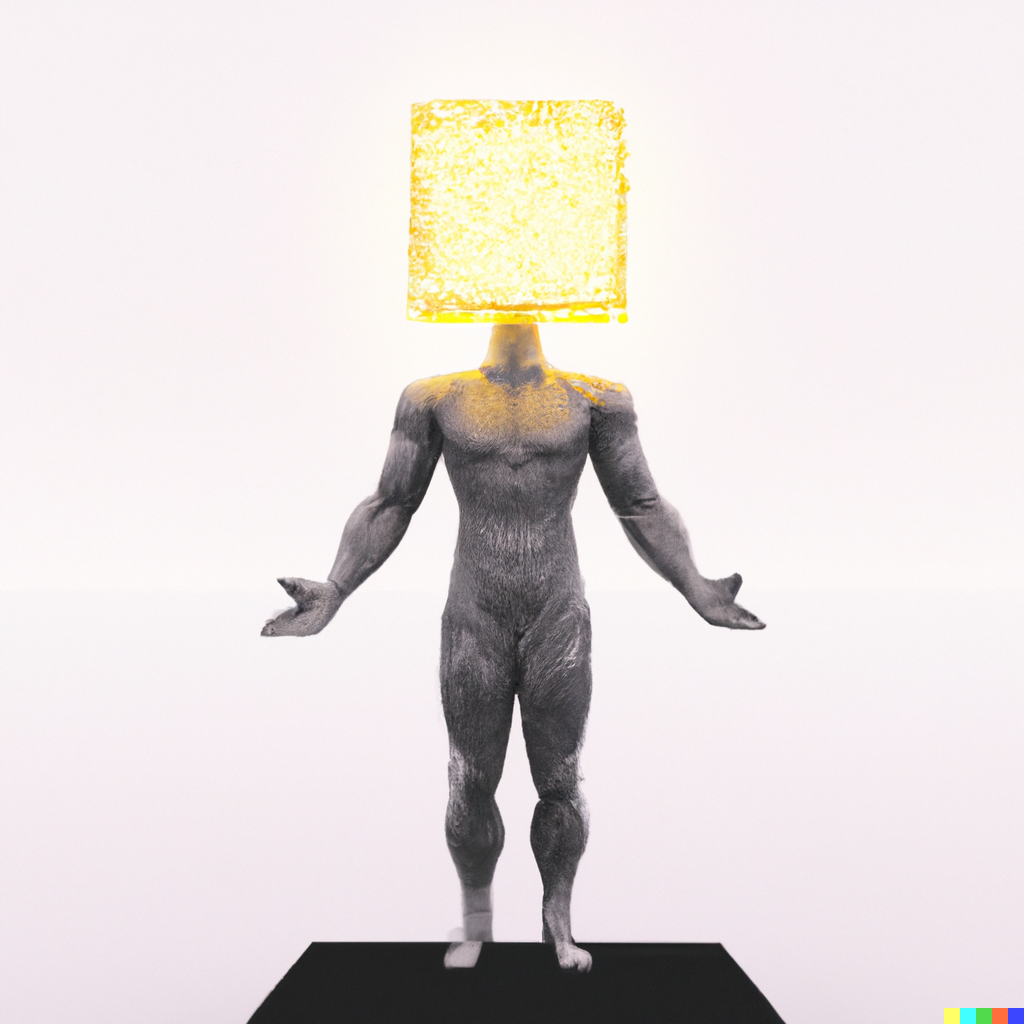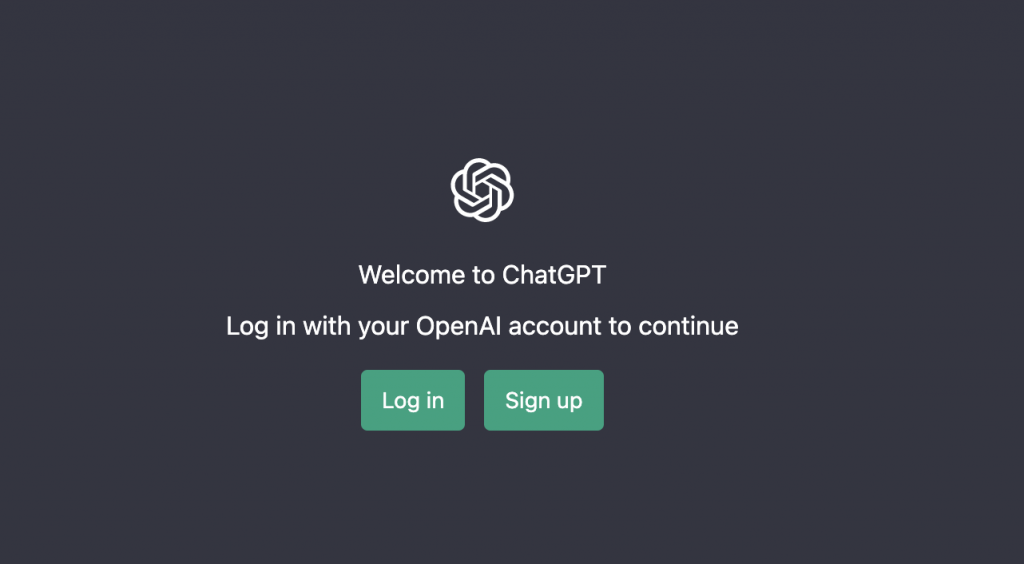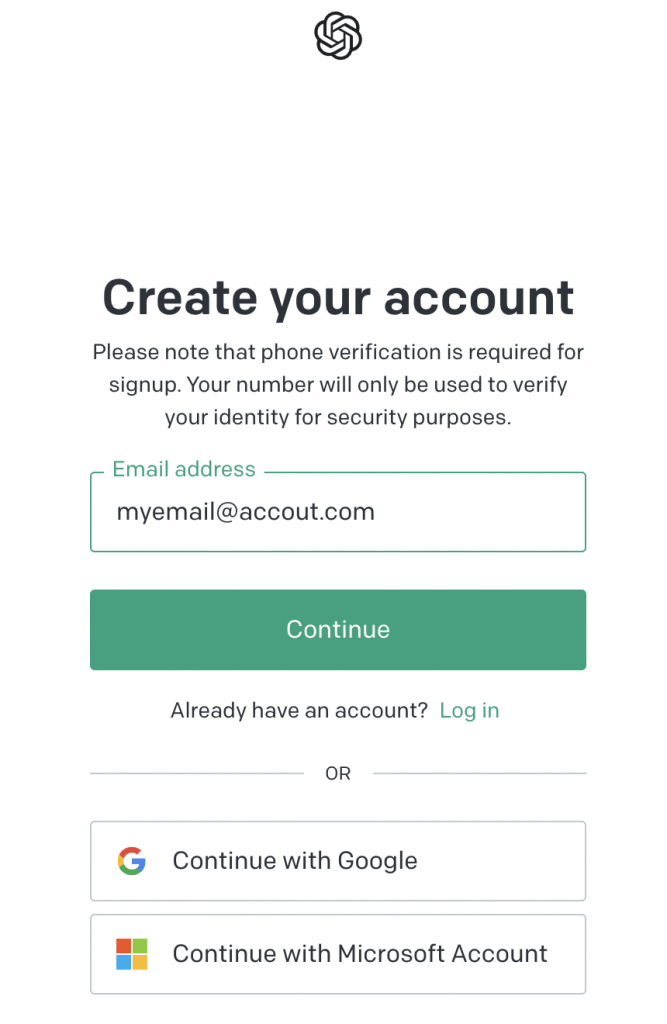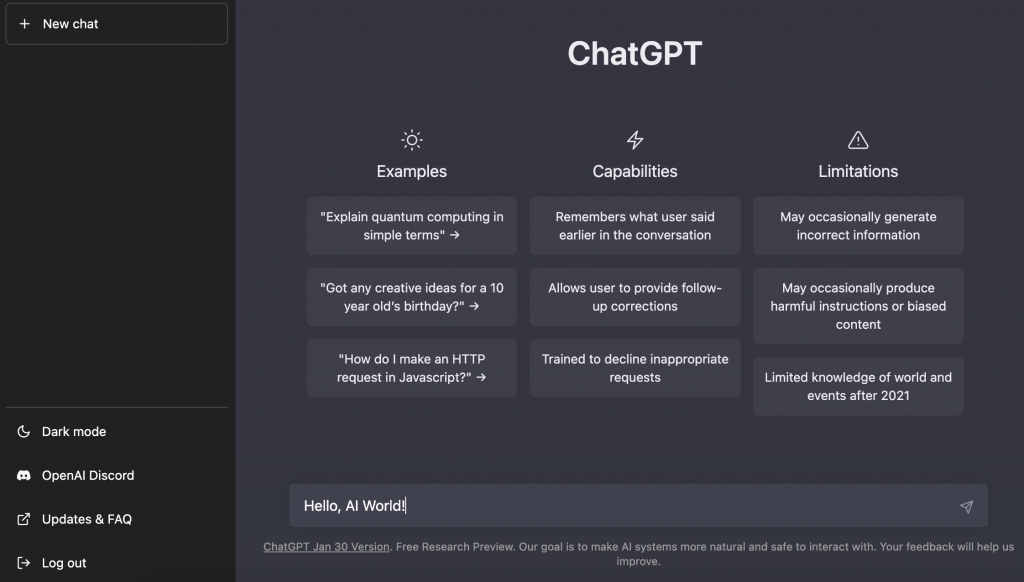
Ok, have you heard about all this hype around AI and ChatGPT specifically? Yeah, me too. Let’s try to figure out what is that all about, how to use it, and how it can possibly change the future. Honesty, I’m really impressed and terrified at the same time. So let’s get started.
What is ChatGPT
ChatGPT has been specifically trained to generate human-like responses to text-based prompts. This means that when given a prompt, such as a question or a statement, it can generate a coherent and contextually relevant response. This makes ChatGPT particularly well-suited for chatbot development, where it can be used to provide engaging and personalized conversations with users.
In addition to chatbot development, ChatGPT can also be used for a wide range of other tasks, such as question answering, language generation, and sentiment analysis. Its large and diverse training corpus, combined with its advanced architecture, allows it to generate high-quality responses even in complex or nuanced scenarios.
Overall, ChatGPT represents a significant advancement in the field of conversational AI, and its versatility and capabilities make it a valuable tool for a wide range of applications and industries.
What makes ChatGPT so good
There are several factors that contribute to the high quality of ChatGPT:
- Large training corpus: ChatGPT has been trained on a massive amount of text data, which includes a diverse range of topics and writing styles. This helps the model to better understand and generate text that is consistent with human language.
- Advanced architecture: ChatGPT is based on the transformer architecture, which has proven to be highly effective in NLP tasks. The transformer architecture allows the model to capture long-term dependencies in the input data and generate coherent and contextually relevant responses.
- Pretraining: ChatGPT has been pretrained on a large corpus of text, which means that it has already learned a wide range of language patterns and relationships before it is fine-tuned for a specific task. This helps the model to quickly adapt to new data and perform well even with limited fine-tuning data.
- Generative approach: ChatGPT uses a generative approach, meaning that it can generate new text based on the input prompt, rather than simply selecting a response from a pre-defined set. This allows the model to generate more creative and diverse responses, which can be particularly useful in conversational AI applications.
- Fine-tuning capability: ChatGPT can be easily fine-tuned for specific tasks and domains by training it on task-specific data. This allows the model to generate highly relevant and accurate responses for a particular use case.
These factors, combined with OpenAI’s ongoing research and development, make ChatGPT a highly capable and effective conversational AI model.
What kind of questions I can ask ChatGPT
You can ask ChatGPT a wide range of questions, including but not limited to:
- General knowledge questions: ChatGPT can answer factual questions about history, geography, science, and many other topics.
- Conversational questions: ChatGPT can hold a conversation with people and respond to various types of questions, such as those related to personal interests, opinions, and emotions.
- Language-related questions: ChatGPT can also answer questions about language, grammar, and writing, such as synonyms, definitions, and word usage.
- Problem-solving questions: ChatGPT can assist people in solving problems and providing advice on various topics, such as technology, finance, and personal relationships.
- Creative questions: ChatGPT can also generate new and creative responses, such as jokes, stories, poems, and song lyrics.
Keep in mind that while ChatGPT has been trained on a large corpus of text data, its responses are not always correct and should be independently verified. It is also important to note that ChatGPT’s training data may contain biases, and its responses may reflect these biases.
Restrictions of using ChatGPT
OpenAI has guidelines for the safe and responsible use of its language models, including ChatGPT. The guidelines specify that the model should not be used to generate content that is harmful or offensive, such as hate speech, spam, or false information. The model should also not be used for illegal or unethical purposes, such as identity theft, financial fraud, or malicious hacking.
In addition, OpenAI reserves the right to restrict or remove access to the model for users who violate these guidelines. The company’s goal is to promote the responsible and ethical use of AI technology and to help ensure that its models are used in ways that benefit society and minimize harm.
Languages ChatGPT can support
ChatGPT has been trained on a diverse range of languages. The exact list of supported languages by ChatGPT may vary depending on the specific model and the resources available, but it has been trained on a wide range of languages, including the following:
- English
- Spanish
- French
- German
- Portuguese
- Russian
- Italian
- Dutch
- Chinese
- Japanese
- Korean
- Arabic
- Hindi
- Bengali
- Indonesian
- Thai
- Vietnamese
- Turkish
- Polish
- Danish
This is not an exhaustive list and additional languages may be supported by different models or implementations of ChatGPT.
It is important to note that the quality of the model’s responses may vary depending on the language and the complexity of the input. The model may perform better in some languages or for certain types of questions and may struggle with others. In general, the model’s performance is best when it is used for the languages and tasks it was specifically trained for.
Can I use the output of ChatGPT for commercial use?
Yes. You can use responses you get from ChatGPT for commercial use (true for the moment this article was written, regardless of the version you’re using (free or paid plan). Isn’t this amazing?
Is it possible to run ChatGPT on my computer?
Yes, you can run a ChatGPT model on your own computer, but keep in mind that these models require significant computational resources and may not be feasible to run on a standard home computer.
ChatGPT models are large and complex, and they typically require GPUs or specialized hardware accelerators to run effectively. They also require a lot of memory and disk storage, which can be challenging to provide on a personal computer.
The minimum requirements to run a ChatGPT model will depend on the specific model and the resources available. However, in general, running a ChatGPT model will require the following:
- A modern computer with a powerful GPU: ChatGPT models are computationally intensive and will require a high-end GPU to run effectively. A mid- to high-end Nvidia GPU is recommended.
- A deep learning framework: ChatGPT models are typically implemented using deep learning frameworks such as PyTorch or TensorFlow. You will need to have a working installation of one of these frameworks to run the model.
- Significant memory and disk storage: ChatGPT models are large and require a lot of memory and disk storage to run. You will need at least 16 GB of RAM and several hundred gigabytes of disk space to run a basic model. More advanced models may require even more resources.
- Programming skills: To run a ChatGPT model, you will need to have a good understanding of programming and the deep learning framework you are using. You will need to be able to write code to interact with the model and process its output.
These are general requirements, and the specific requirements for your setup may vary. If you do not have the resources or expertise to run a ChatGPT model on your own computer, you may be able to use cloud-based resources or APIs provided by companies such as OpenAI to access the model’s capabilities. These services can provide the necessary hardware resources and tools, and they often allow you to interact with the model using a simple API, without the need to set up and maintain the infrastructure yourself.
Is Chat GPT free
ChatGPT, like most language models developed by OpenAI, is not completely free. OpenAI provides access to its models through APIs, which allow users to integrate the model’s capabilities into their applications and services. The cost of using these APIs depends on various factors, such as the volume of requests, the complexity of the model, and the specific use case.
OpenAI’s goal is to promote the responsible and ethical use of AI technology and to advance the state of the art in artificial intelligence. By providing access to its models through APIs, the company can monetize its research and development efforts and generate revenue to support further innovation. At the same time, OpenAI is able to make its models widely available to developers, researchers, and businesses, allowing them to benefit from the latest advancements in AI technology.
It is important to note that OpenAI has a commitment to openness and transparency, and it is actively working to promote the responsible and ethical use of AI technology. The company provides extensive documentation and guidelines for the safe and responsible use of its models, and it is committed to working with its partners to ensure that its models are used in ways that benefit society and minimize harm.
Enough talking. Let’s try it.
Yeah. Pretty sure you are here because you’ve heard a lot about ChatGPT and want to try it on your own, right? Luckily, it’s super easy to do and it’s absolutely free yet (so hurry up). First thing first we need an account, so open
create ChatGPT account page and click the “Sign Up” button.

You can use Google, Microsoft accounts or use traditional way (your email/password) to create an account for ChatGPR.

And that’s it. Now you can log in and finally try it.

You’re all set. Now you can finally try it yourself. Ask any question you like (keep in mind all the limitations though).
The end
Are you still here? Still, have some questions? No way. You can find answers to the majority of your questions in the ChatGPT app. And that’s what really scary. This is the end of the Internet you know it. Many peoples could possibly lose their jobs soon. This can impact many industries and job types, including data entry, customer service, and some manual labor jobs.
Anyway here are some links:
- Official OpenAI website: openai.com
- ChatGPT FAQ